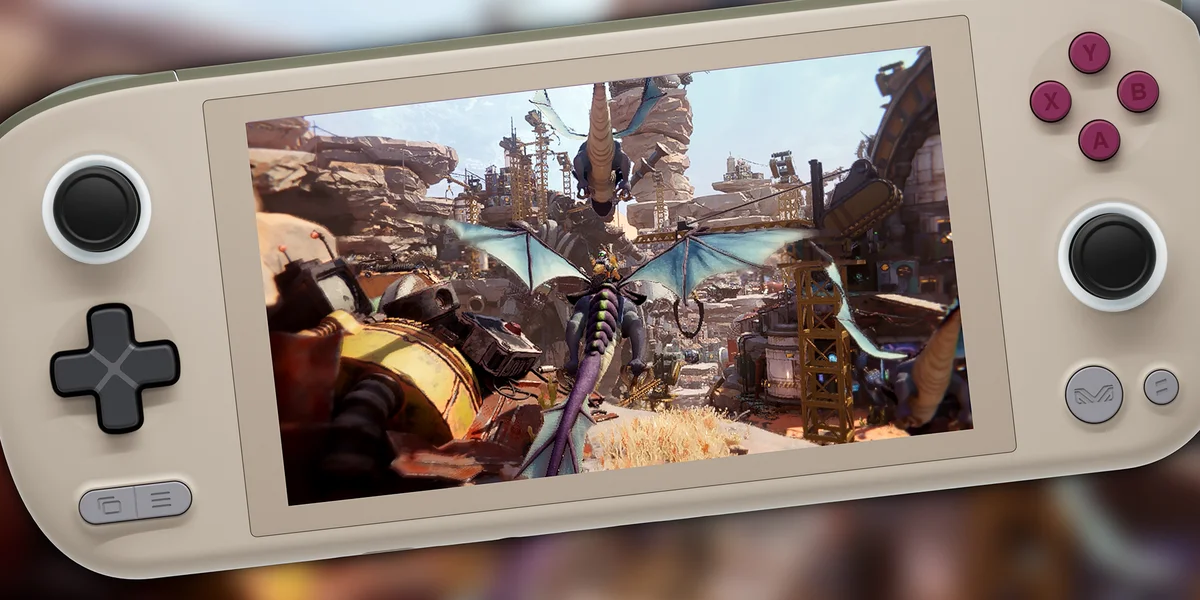Reviews
Ayaneo 3 Review: A Portable Powerhouse for Modern and Retro Gaming Fans

When it comes to handheld gaming, I’ve always had a mix of nostalgia and high expectations. As someone who grew up swapping Game Boy cartridges and spending weekends perfecting combos in Street Fighter Alpha 3, I’ve followed the evolution of handheld consoles closely. So when the Ayaneo 3 was announced—a device boasting desktop-class specs in a palm-sized package—I knew I had to try it. In this ayaneo 3 review, I’m sharing my personal hands-on experience, covering everything from hardware to retro game emulation and real-world performance.
Initial Reactions and Aesthetic Appeal
The first time I held the Ayaneo 3, I couldn’t help but admire its clean design. It’s compact, but it doesn’t feel fragile. The shell is built with a premium-grade plastic that has a smooth matte finish, giving it a luxurious feel without being slippery. The device isn’t overly flashy, opting instead for a sophisticated, modern look. With its near edge-to-edge display and subtle button placement, the Ayaneo 3 looks more like a futuristic piece of tech than a traditional gaming handheld.
While it’s heavier than a typical handheld, the weight is well distributed, giving the unit a sturdy, substantial feel. I’ve spent hours with it in my hands, and not once did I feel the kind of wrist fatigue I’ve gotten from bulkier devices like the Steam Deck or older gaming laptops.
Display Quality and Visual Experience
The Ayaneo 3 comes with a 7-inch Full HD touchscreen that genuinely impressed me. The colors are vivid, the blacks are surprisingly deep for an LCD panel, and the brightness holds up well even in sunlight. Whether I was revisiting Sonic CD or diving into a few hours of Cyberpunk 2077, the visuals were crisp and immersive.
What sets the screen apart isn’t just its clarity—it’s the responsiveness. Swiping through menus or navigating the Windows 11 interface feels fluid, with zero lag. For retro gamers like me, the screen offers a fresh perspective on pixel art games, enhancing their charm without distorting their original aesthetic.
Internal Hardware: A Technical Leap Forward
No ayaneo 3 review would be complete without addressing what’s under the hood. My unit came equipped with the AMD Ryzen 7 7840U processor, paired with 32GB of fast LPDDR5 RAM and a 1TB solid-state drive. That’s a configuration you’d expect from a mid-tier gaming laptop, not a device that fits in your backpack.
Launching and running modern PC titles was smoother than I anticipated. Games like Resident Evil Village and Forza Horizon 5 ran well at medium settings, consistently hovering around the 40–50 FPS mark. For lighter titles or indie games, you can comfortably push settings to high without sacrificing performance.
But where the Ayaneo 3 really shines is emulation. From Dreamcast to PlayStation 3, I was able to emulate classics that have traditionally been challenging for handhelds. Running Skate 3 through RPCS3 or Metroid Prime 2 via Dolphin felt seamless. Even Wii U titles worked without stuttering. For anyone who’s looking for a device that handles modern and legacy systems alike, this machine is a beast.
Controls and Tactile Response
When it comes to handhelds, performance isn’t everything. The control scheme has to feel intuitive and responsive. Thankfully, the Ayaneo 3 nails it. The analog sticks use hall effect sensors, which not only ensure high precision but also eliminate drift—a notorious problem on other handhelds. The D-pad is tactile and responsive, perfect for 2D fighters and retro platformers. The face buttons have a satisfying click, similar to the SNES controller, only more refined.
One of my favorite features is the inclusion of rear paddles. These can be mapped to any input, giving you more flexibility without cluttering the front of the device. For example, I mapped the rear buttons to quick-save and quick-load functions while playing EarthBound, making the experience feel even smoother.
User Interface and Software Environment
Unlike traditional consoles, the Ayaneo 3 runs a full version of Windows 11. While that might sound overwhelming, it actually offers great flexibility. You can install any launcher you prefer—Steam, Epic Games Store, Xbox, and even emulation frontends like LaunchBox or RetroArch.
The downside? Navigating Windows on a small screen isn’t always ideal. Luckily, Ayaneo includes its own proprietary software overlay called Ayaspace. This tool makes it easier to control performance settings, launch games, and remap buttons with minimal fuss. It’s not perfect—there are occasional hiccups—but updates come frequently, and it’s much better than having to dig into Windows settings manually every time.
Game Compatibility and Library Access
From a gaming library perspective, the Ayaneo 3 offers complete freedom. You aren’t locked into a single ecosystem. During this ayaneo 3 review, I tested games across Steam, Game Pass, and even older DRM-free titles from GOG. Everything worked, and in many cases, better than expected.
Being able to switch between Doom Eternal, The Sims 4, and Persona 3 FES (via emulator) in a matter of seconds gave me the kind of flexibility I’ve always wanted in a portable. It truly feels like a do-it-all device, whether you’re in the mood for a AAA open-world title or a pixel-perfect retro gem.
Battery Life and Thermal Efficiency
Let’s talk about power—the kind that keeps you playing. Battery life on the Ayaneo 3 is heavily dependent on what you’re doing. On lower wattage profiles (10-15W), I got around four hours while playing SNES and Game Boy Advance titles. But with more demanding games like Red Dead Redemption 2, battery life dropped to around 90 minutes.
The good news is that fast charging via USB-C is supported, and you can tweak performance settings using Ayaspace to balance power and efficiency. The cooling system is impressive too. Even under stress, the fans didn’t get too loud, and the device never became uncomfortably hot to the touch.
Real-World Usage and Portability
One of the best parts about the Ayaneo 3 is how it fits into my daily routine. Whether I was traveling, lounging on the couch, or even waiting at the DMV, the handheld made it easy to dive into a game without needing a bulky laptop or docking station. It even fits in larger jacket pockets, which is a major plus for portability.
I took it with me on a weekend trip and found that it complemented my gaming habits perfectly. I was able to connect it to a portable monitor via USB-C, hook up a Bluetooth controller, and turn it into a makeshift console within minutes. That kind of flexibility is rare—and something that genuinely surprised me during this ayaneo 3 review.
Final Thoughts on the Ayaneo 3
After weeks of testing and tinkering, I can confidently say the Ayaneo 3 is more than just a gimmicky handheld. It’s a genuine contender in the growing space of portable PC gaming. Yes, it comes with a premium price tag, and the Windows-based OS won’t be for everyone, but for serious gamers who want performance, portability, and customization, it delivers.
This device caters to enthusiasts, especially those of us who love retro games but also want to explore modern titles on the go. If you’re the type of gamer who values high-end specs in a small form factor, and you’re willing to pay a little extra for build quality and flexibility, the Ayaneo 3 is absolutely worth your attention.
Would I Recommend It?
In a word—yes. For retro gaming fans who also enjoy dabbling in current-gen titles, the Ayaneo 3 is one of the most well-rounded handhelds available. It’s powerful, comfortable, and versatile enough to replace both your emulator setup and your portable console. This ayaneo 3 review reflects my experience, and I’d encourage anyone on the fence to consider what kind of gaming lifestyle they want. If flexibility and performance are at the top of your list, this device is hard to beat.










